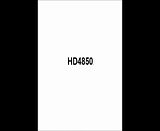So: back from a week in Boston, USA to find that my parcel awaits, looking rather like some sort of suspect package:
But, fear not, it’s nothing illegal – Despite my jetlag, I manage to rip open the plastic and find the box for a new graphics card kindly sent by the HEXUS team in return for me entering a competition:
For some reason there appears to be a woman with a big sword in a gimp suit on the back:
It really puzzles me why they insist on putting this kind of image on graphics card boxes. I, for one, have never played a game (maybe I'm missing out?!) that includes a woman in a black wetsuit with a massive sword - I'm sure swimming or kite surfing with that thing would be very impractical. Presumably she has also had some sort of face and hair transplant (probably sustained from some kind of horrible samurai-surfing accident) which would account for the bandages around her head.
What’s inside?
Basic stuff, but nice to see they have included an HDMI cable. There is also a DVI to VGA converter. Unfortunately no HDMI to DVI – which is a shame as I use two monitors but neither has an HDMI port... (I’m sure I have a converter somewhere but frankly I’ve no idea where I left it; I'll need to get a cheap one off the bay or something I guess; or a new monitor!).
Also inside is the user manual, installation CD, registration card and of course the graphics card itself, and it’s quite impressive looking with an enormous passive cooler:
Here it is from the bottom:
And here are the three (DVI, Displayport and HDMI) connection options:
To give you an idea of just how big that cooler is, I decided to look for a guinea pig to help me give you guys a sense of scale. Here is the result:
Massive eh?
So, what am I replacing with this new card? My Asus HD4850 512mb (aka the Hairdryer). You can find the rest of my system specs on the left.
How do these two cards compare?
First things first, I need to set a benchmark by running some tests with my old graphics card (with most recent AMD drivers installed).
Thanks to Stevie Lee's review for the link to the Unigine GPU Benchmark thing which I have used to conduct the benchmarks with the following settings (all at my native screen resolution of 1680 by 1050)...
Low Quality
DX9
Shaders = Low
Anistropy = Off
Textures = Low
Filter = Bilinear
Ambient occlusion = Off
Refraction = Off
Volumetric shadows = Off
AA = Off
Medium Quality
DX10 (& DX11 for the new card)
Shaders = Medium
Anistropy = 2x
Textures = Medium
Filter = Trilinear
Ambient occlusion = On
Refraction = On
Volumetric shadows = On
AA = 2x
Tessellation (for DX11) = Moderate
High Quality
DX10 (& DX11 for the new card)
Shaders = High
Anistropy = 16x
Textures = High
Filter = Trilinear
Ambient occlusion = On
Refraction = On
Volumetric shadows = On
AA = 4x
Tessellation (for DX11) = Moderate
So, after benchmarking the old card, I uninstall the AMD drivers and pop in the new card. No additional power is required for this (unlike the HD4850 which needed a 6-pin connector from the PSU in addition to the power supplied via the PCI slot). Attach the DVI cable, switch on and the display lights up (phew!). After a few minutes I have the drivers installed and up to date. Then it’s testing time for the new card...
Here are the results:
So - looking at the average framerates the 4850 does OK on the low settings but struggles with anything higher.
The 7750 meanwhile, outperforms the 4850 by about 35% in the low settings, and about 28% in the medium settings (for DX10) where it averages about 35 FPS. With DX11 enabled the frame rate for the 7750 drops to around 30 FPS which is just about 'playable'.
At high settings the 4850 suffers but the 7750 still manages to push out frame rates of around 25 FPS with DX11 enabled, which is probably a little slower than playable.
What struck me was the fact that there was a relatively small drop-off in frame rates when moving from DX10 to DX11 with the 7750. This is despite some large improvements in texture quality. For example:
DX10:
vs DX11:
DX10:
vs DX11:
This won't be particularly new to most people I guess, but the step-up in graphics detail is very welcome from the newer card.
Finally, one major difference between the cards is the fact that the HD4850 shipped with it's stock cooler and ran notoriously hot, whilst the HD7750 has a passive cooler.
For comparison, I've made a recording of my system under full load with the 4850:
and the 7750:
It's quite a difference!!
All in all then, the Sapphire 7750 Ultimate 1GB offers a welcome upgrade to an ageing (and noisy) HD4850. I've yet to test it in any proper games, but the benchmarks suggest a small but significant improvement in frame rates along with the benefit of DX11 textures, whilst all being packaged up in a silent form. However, although I'm not using it in a HTPC, I wonder whether the large heatsink may put some people off using it for this purpose, and other more powerful alternatives are undoubtably a better upgrade for serious gamers.
Thanks again HEXUS for another great competition. I'm very happy to have won!





 LinkBack URL
LinkBack URL About LinkBacks
About LinkBacks
















 Reply With Quote
Reply With Quote